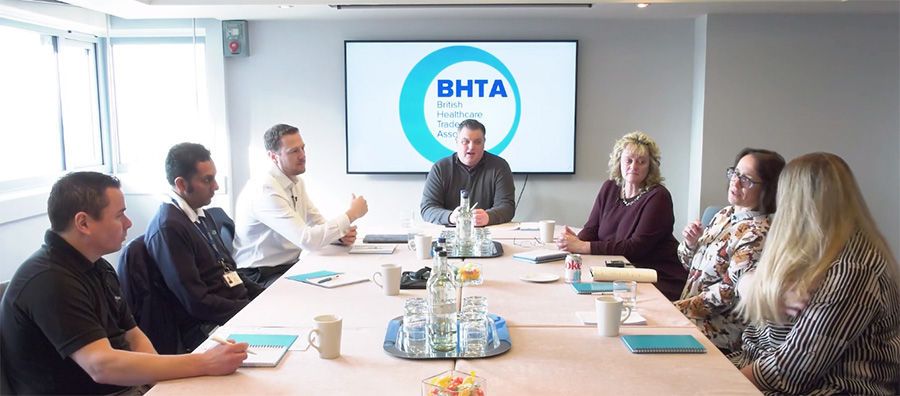Video: Roundtable explores whether there is a desire to move back to face-to-face assessments for assistive tech

The second of a five-part webinar series exploring the topic of virtual assessments for assistive technologies has been released, where specialists discuss whether there is a desire to move back to face-to-face assessments.
Delivered by the British Healthcare Trades Association (BHTA), the second webisode asks assistive technology specialists whether there is a desire among healthcare workers and patients to do face-to-face assessments for assistive technologies given that the restrictions that led to going virtual have eased.
Chaired by BHTA’s Head of Policy, Bill Lee, the panel consisted of Matthew James, Director of Precision Rehab; Rachel Russel, Senior Regional Advisor for Foundations UK; Clare Barber, Professional Services Manager at Disabled Living Foundation (DLF); Julie Blake, Senior Clinical Manager at NRS Healthcare; James Bennett, Sales and Marketing Director at Care & Independence; and Nash Kumar, Director at Higher Elevation.
This latest webisode follows the previous session, where the assistive technology panel shared their experiences of delivering assessments virtually at London’s Tower Bridge Hotel.
Commenting on the fact that there has been a huge surge in assessment requests post-COVID, Clare Barber, Professional Services Manager at Disabled Living Foundation, said: “I would say we’ve seen an 80 percent increase of people wanting us to come out and do things, and do things now, not just do things in a few months.
“I’ve got a waiting list of people wanting me to come and help and do assessments, training, all of that sort of stuff. But they are desperate for this kind of face-to-face contact. And it’s adamant in 90% of cases that it has to be [face to face].”
Although there seems to be an eagerness among clients to have face-to-face assessments, it was highlighted that assessors can more efficiently manage caseloads if they use virtual assessments before a face-to-face assessment to gather information quickly and easily.
As Matthew James, Director of Precision Rehab, pointed out: “We’ve completely embraced the side of virtual assessments purely because it saves me time, and it saves the other guys’ time. If you can visually see the client straight away… you go ‘Oh that client’s going to need this, this and this’. That straight away looking at someone, you know that it’s this level of chair or it’s that level chair. It cuts that whole thing down.
“It makes us a lot more efficient to just do a video assessment first or even just basic screenshots of them sitting in a chair. It saves a load of time.”
The point was raised, though, that if virtual assessments for assistive technology became the standard procedure, a client could end up having no person-to-person contact throughout their assessment.
“It may get to a point where this person is never seen by anybody because everybody is doing virtual,” Clare flagged.
The panel agreed that a blend between virtual and face-to-face assessments is the way forward, which helps speed up assessment processes while still giving a personal element to the client’s journey.
Nash Kumar, Director at Higher Elevation, commented: “I think it’s how we can use the technology to make things more efficient and faster. You’re never going to see everything virtually. Sometimes, we still miss things with the human element. We’re human, and we’re going to make mistakes in that sense.”
Watch the interesting second webisode below:

